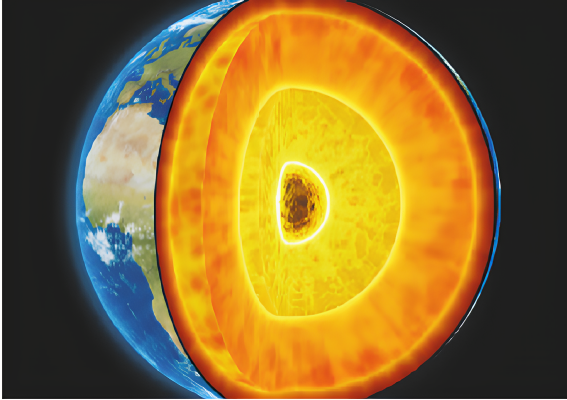Fique por dentro das novidades
Inscreva-se em nossa newsletter para receber atualizações sobre novas resoluções, dicas de estudo e informações que vão fazer a diferença na sua preparação!
Questão ativa
Já visualizadas
Não visualizadas
Resolução pendente
Questão anulada
Sem alternativas


Our planet is home to subterranean lava deposits and smatterings of obsidian—black volcanic glass. Scalding groundwater bubbles to the surface in places. In such a landscape, you remember that the planet’s hard exterior is so thin that we call it a crust. Its superheated interior burns with an estimated forty-four trillion watts of power. Heat mined from underground is called geothermal and can be used to produce steam, spin a turbine, and generate electricity. Until recently, humans have tended to harvest small quantities in the rare places where it surfaces, such as hot springs. The biggest drawback is drilling miles through hot rock, safely. If scientists can do that, next-generation geothermal power could supply clean energy for eons. Right now, geothermal energy meets a puny portion of humanity’s electricity and heating needs. Fossil fuels power about eighty per cent of human activity, pumping out carbon dioxide and short-circuiting our climate to catastrophic effect. Converts argue that geothermal checks three key boxes: it is carbon-free, available everywhere, and effectively unlimited. It is also baseload, which means that, unlike solar panels or wind, it provides a steady flow of energy. “Over the last two years, I have watched this exponential spinup of activity in geothermal,” a drilling expert said. But there is a risk of moon shots: often, they miss. “There’s basically zero chance that you’re going to develop a moon-shot technology and have it be commercial in five years, on a large-scale”, said Mark Jacobson, an engineering professor. That’s how long humanity has to lower emissions before climatic devastation. “There’s a very decent chance you can do that with wind and solar,” he said. Perhaps, when resources and time are finite, trying and failing could be worse than not trying at all.
New Yorker. March 2025. Adaptado.
De acordo com o texto, atualmente a exploração do calor gerado nas regiões subterrâneas do planeta
atende a uma parcela insignificante da demanda energética da sociedade.
pode ser utilizada através de um aparato tecnológico de baixo custo.
oferece vantagens ambientais limitadas em relação a outras fontes de energia renováveis.
utiliza métodos desenvolvidos nas pesquisas científicas sobre a superfície lunar.
proporciona utilidade prática restrita do ponto de vista da produção industrial.
Atualmente, a exploração do calor gerado nas regiões subterrâneas do planeta atende uma parcela insignificante da demanda energética da sociedade, como se verifica no trecho "Right now, geothermal energy meets a puny portion of humanity’s electricity and heating needs".
Inscreva-se em nossa newsletter para receber atualizações sobre novas resoluções, dicas de estudo e informações que vão fazer a diferença na sua preparação!